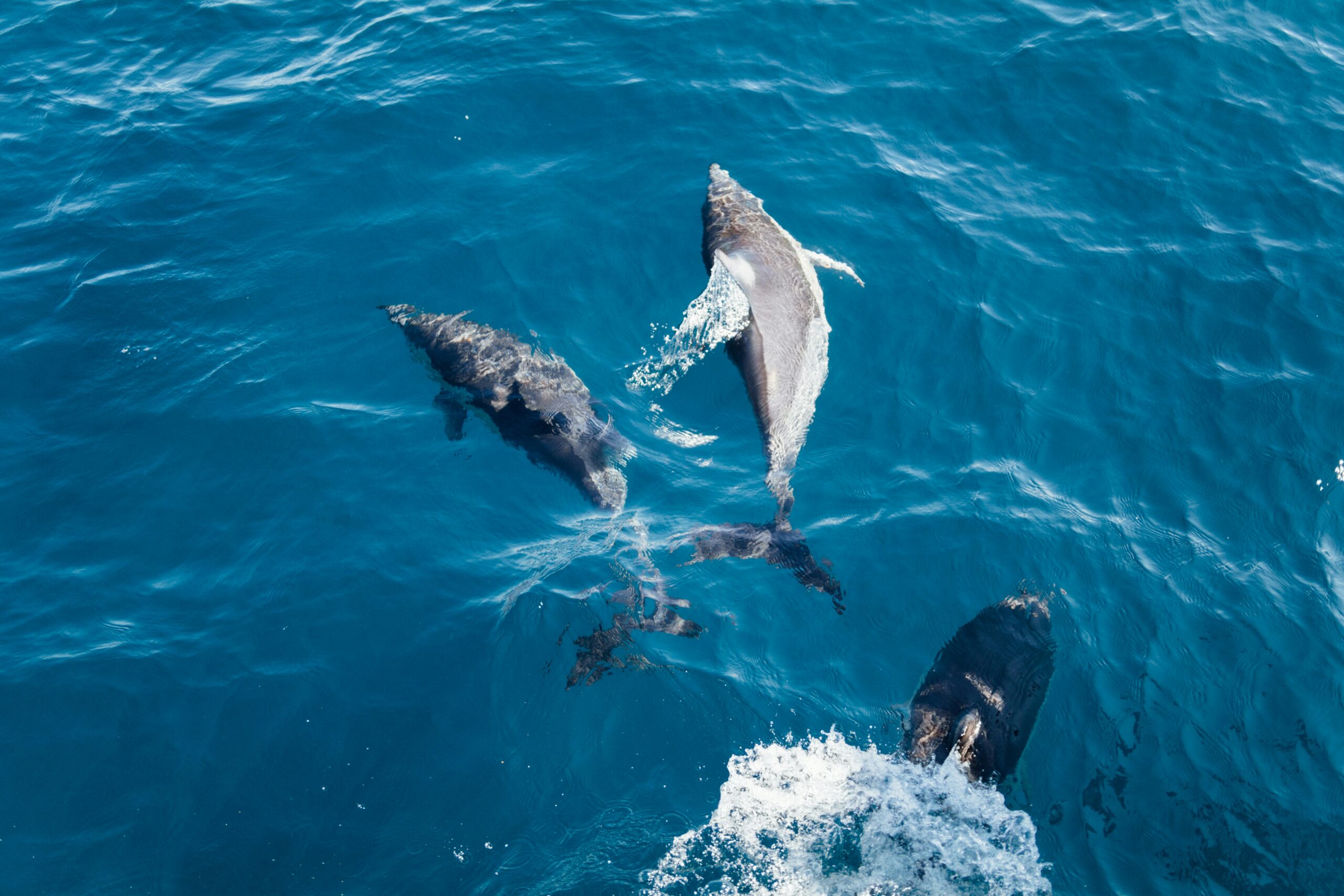
Florida is one of the most biologically diverse states in the U.S., with its expansive coastlines, rich marine ecosystems, and clear, warm waters. For sailors exploring the state’s seas, witnessing the vibrant marine life is one of the journey’s highlights. Florida’s waters teem with fascinating wildlife, from playful dolphins to majestic sea turtles and colorful fish. Understanding the different species you may encounter and how to interact with them respectfully enhances your sailing experience while contributing to the conservation of these vital ecosystems.
This guide will introduce you to Florida’s most remarkable marine wildlife and offer practical tips on observing and protecting these creatures during your sailing adventures.
Dolphins: The Playful Navigators
Dolphins are among the most beloved marine mammals, and Florida’s waters are a prime habitat for several species, including the Atlantic bottlenose dolphin. You can often see these intelligent and social creatures in coastal waters, estuaries, and the open ocean. They are known for their playful behavior, frequently swimming alongside boats and leaping out of the water in acrobatic displays.
Sailing along Florida’s coastlines, especially in regions like Tampa Bay, the Florida Keys, and Indian River Lagoon, offers excellent opportunities to spot dolphins in their natural environment. Early morning or late afternoon sails are particularly ideal since these times tend to see calmer waters and more active dolphin groups.
When observing dolphins, it’s essential to respect their space. While they may seem curious and eager to approach boats, it’s necessary to avoid chasing or harassing them. Maintain a safe distance of at least 50 yards to ensure their safety and well-being. Boaters should also avoid making sudden moves or loud noises that could disrupt the dolphins’ natural behavior. Observing them from afar is the best way to appreciate their beauty without interfering with their daily activities.
Sea Turtles: Ancient Mariners
Florida’s waters are home to several species of sea turtles, including the loggerhead, green, hawksbill, and leatherback turtles. These ancient mariners migrate long distances across the globe, often returning to the same nesting beaches year after year. Florida’s coastline is a critical nesting ground for these turtles, particularly in Melbourne Beach and Gulf Islands National Seashore.
If you sail near Florida’s beaches during nesting season, typically from May to October, you may encounter sea turtles on the shore or in the water. Green turtles, for example, are often found in the shallows, grazing on seagrass beds. These turtles are vital to the health of the marine ecosystem as they help maintain seagrass beds, which in turn support other aquatic species.
When encountering sea turtles while sailing, it’s crucial to exercise caution. Avoid approaching them too closely, and watch for hatchlings during nesting season. It’s also important to avoid disturbing their nests on the beach. Flashlights or bright lights can disorient adult turtles and hatchlings, so always use red filters or dim lighting near a nesting site at night.
Manatees: The Gentle Giants
You can often find the West Indian manatee, a large, slow-moving marine mammal, in Florida’s warm waters, particularly in places like the Indian River Lagoon, Crystal River, and Everglades National Park.These gentle giants are herbivores and spend most of their time grazing on seagrass, abundant in Florida’s shallow waters. While they can grow up to 13 feet long and weigh over 1,000 pounds, manatees are surprisingly gentle and docile creatures.
Manatees are especially common in Florida’s spring-fed rivers, such as Crystal River, where the warm water helps them survive during cooler months. During the winter, manatees often seek out warmer waters in places like the Florida Power & Light plant near Titusville, where the water remains at a comfortable temperature year-round.
When you sail in areas where manatees frequent, be mindful of their presence. Slow down in shallow, seagrass-rich areas, as manatees often submerge and are hard to spot. Reducing speed helps prevent accidents, as manatees may surface suddenly.In addition, be sure to follow posted speed limits and guidelines in designated manatee protection zones to help protect these vulnerable creatures.
Florida’s Diverse Fish Species
Florida’s marine ecosystems are home to various fish species, from brightly colored reef fish to large predators like sharks and grouper. If you’re an avid angler or enjoy observing fish, Florida offers an exciting range of opportunities to see both common and rare species.
One of the most popular areas for fishing and snorkeling is the Florida Keys, home to the Florida Reef, the third-largest barrier reef system in the world. Here, you can expect to encounter an array of tropical fish like parrotfish, yellowtail snapper, and sergeant major fish. The clear, shallow waters of the Keys provide perfect visibility, allowing sailors to enjoy both above-water and underwater views.
Florida also boasts a diverse collection of game fish that attract anglers from all over the world. Snook, tarpon, and redfish are just a few examples of fish found in Florida’s coastal waters. These species can be spotted from a boat or caught for sport (within legal limits), and they often provide an exciting challenge for seasoned sailors and fishermen.
Sailing in Florida offers a unique opportunity to witness the incredible diversity of marine wildlife that calls the state’s waters home. Florida’s coastal ecosystems are teeming with life, from the playful dolphins and ancient sea turtles to the gentle manatees and vibrant fish. By respecting these creatures and following responsible boating practices, sailors can contribute to protecting and preserving Florida’s marine life while enjoying the beauty and wonder of the seas. Whether you’re an experienced sailor or a beginner, the chance to encounter Florida’s marine wildlife is an unforgettable part of any sailing adventure.